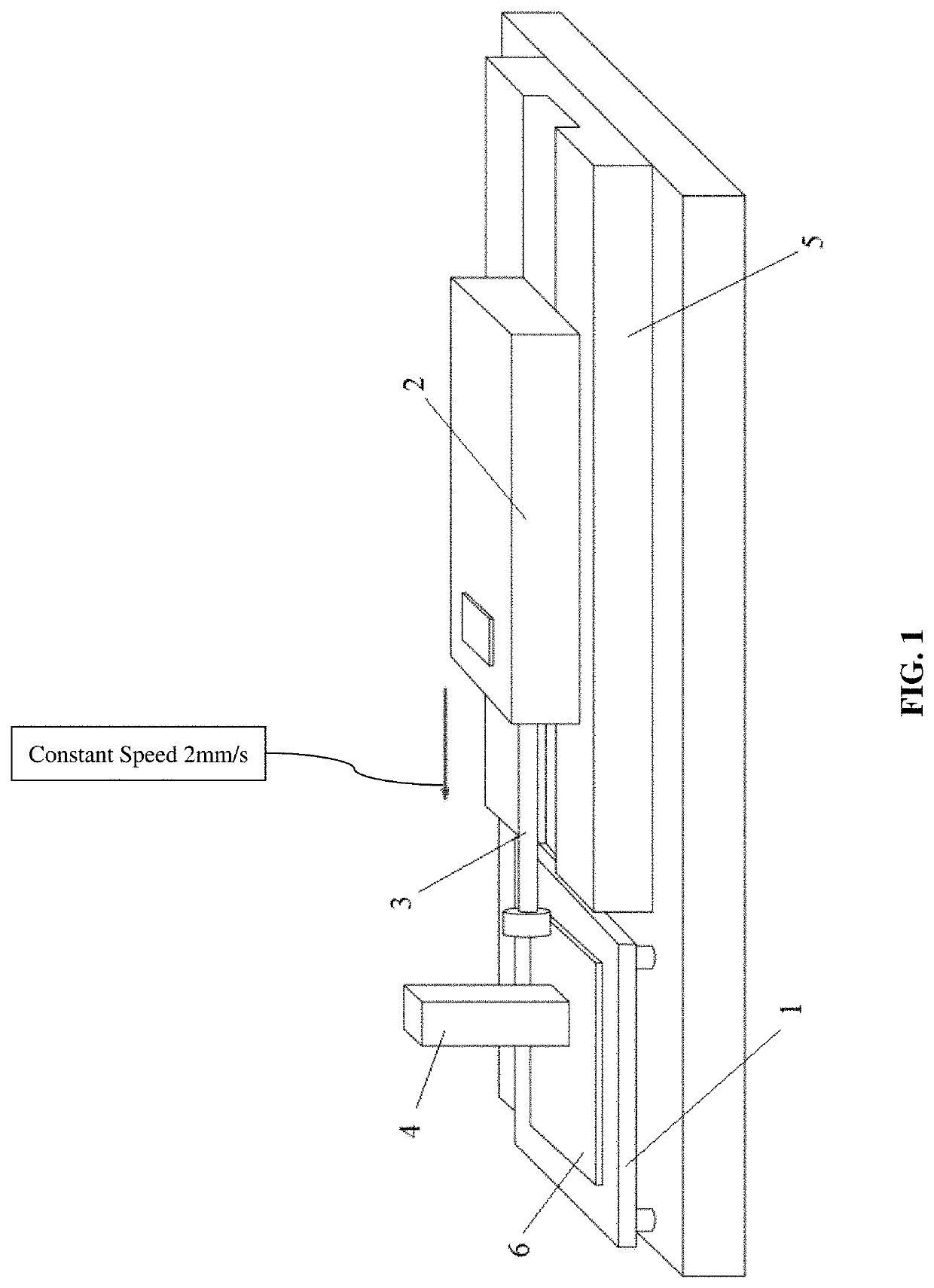Method For Preparing Self-Cleaning Anti-Icing Coating Based On Brushlike Organosilicone
- Summary
- Abstract
- Description
- Claims
- Application Information
AI Technical Summary
Benefits of technology
Problems solved by technology
Method used
Image
Examples
example 1
[0032]Under nitrogen, 5.0 mL of dioxane, 0.10 mmol of acrylamide thiolactone, 0.10 mmol of 3-mercapto-1-propanol and 0.50 mL of triethylamine were respectively added into a reactor to obtain a first mixture, and the first mixture was subjected to a thiol-ene addition reaction at ambient temperature for 1 h, obtaining a modified thiolactone. 0.05 mmol of a diamine and 0.10 mmol of a siloxane were sequentially added in the reactor to obtain a second mixture, and the second mixture was sequentially subjected to an amino nucleophilic ring opening reaction and a thiol click reaction of thiolactone for 6 h, obtaining a siloxane block. Under nitrogen, 12 mmol of PTMEG, 6 mmol of IPDI, 50 μL of DBTDL and 6 mmol of BDO (dissolved in 5 mL of DOX) were sequentially added into a reactor and reacted at a temperature of 60° C. for 4 h, obtaining a resin matrix. 1 g of the resin matrix was taken and dissolved in 3 mL of DOX, obtaining a solution with a concentration of 25%. The solution was laid o...
example 2
[0035]Under nitrogen, 5.0 mL of dioxane, 0.20 mmol of acrylamide thiolactone, 0.20 mmol of 3-mercapto-1-propanol and 1.0 mL of triethylamine were respectively added into a reactor to obtain a first mixture, and the first mixture was subjected to a thiol-ene addition reaction at ambient temperature for 3 h, obtaining a modified thiolactone. 0.10 mmol of a diamine and 0.20 mmol of a siloxane were sequentially added in the reactor to obtain a second mixture, and the second mixture was sequentially subjected to an amino nucleophilic ring opening reaction and a thiol click reaction of thiolactone for 18 h, obtaining a siloxane block. Under nitrogen, 8.0 mmol of PTMEG, 2.0 mmol of IPDI, 150 μL of DBTDL and 6.0 mmol of BDO (dissolved in 5 mL of DOX) were sequentially added into a reactor and reacted at a temperature of 80° C. for 6 h, obtaining a resin matrix. 1 g of the resin matrix was taken and dissolved in 4 mL of DOX, obtaining a solution with a concentration of 20%. The solution was ...
example 3
[0038]Under nitrogen, 5.0 mL of dioxane, 0.10 mmol of acrylamide thiolactone, 0.10 mmol of 3-mercapto-1-propanol and 0.50 mL of triethylamine were respectively added into a reactor to obtain a first mixture, and the first mixture was subjected to a thiol-ene addition reaction at ambient temperature for 1 h, obtaining a modified thiolactone. 0.05 mmol of a diamine and 0.10 mmol of a siloxane were sequentially added in the reactor to obtain a second mixture, and the second mixture was sequentially subjected to an amino nucleophilic ring opening reaction and a thiol click reaction of thiolactone for 6 h, obtaining a siloxane block. Under nitrogen, 16 mmol of PTMEG, 4 mmol of IPDI, 50 μL of DBTDL and 12 mmol of BDO (dissolved in 5 mL of DOX) were sequentially added into a reactor and reacted at a temperature of 70° C. for 10 h, obtaining a resin matrix. 1 g of the resin matrix was taken and dissolved in 2 mL of DOX, obtaining a solution with a concentration of 33%. The solution was laid...
PUM
| Property | Measurement | Unit |
|---|---|---|
| Temperature | aaaaa | aaaaa |
| Temperature | aaaaa | aaaaa |
| Temperature | aaaaa | aaaaa |
Abstract
Description
Claims
Application Information
 Login to View More
Login to View More - R&D
- Intellectual Property
- Life Sciences
- Materials
- Tech Scout
- Unparalleled Data Quality
- Higher Quality Content
- 60% Fewer Hallucinations
Browse by: Latest US Patents, China's latest patents, Technical Efficacy Thesaurus, Application Domain, Technology Topic, Popular Technical Reports.
© 2025 PatSnap. All rights reserved.Legal|Privacy policy|Modern Slavery Act Transparency Statement|Sitemap|About US| Contact US: help@patsnap.com


